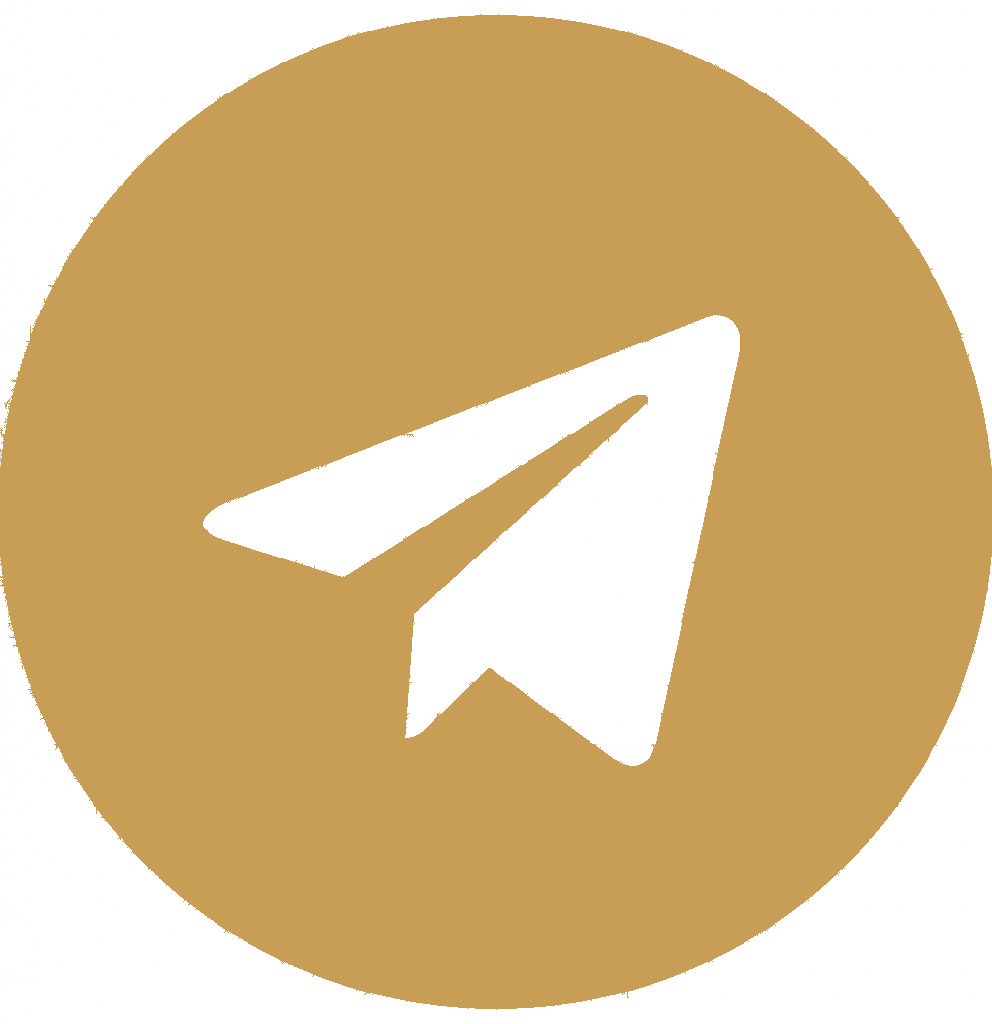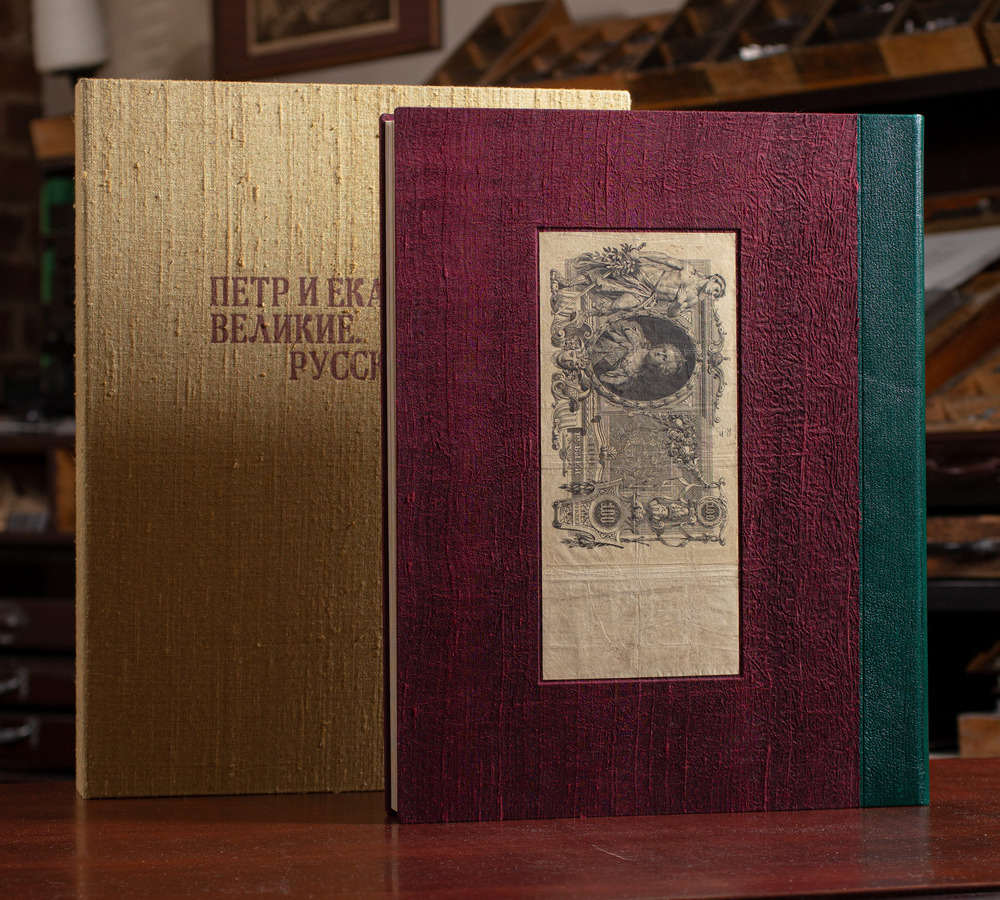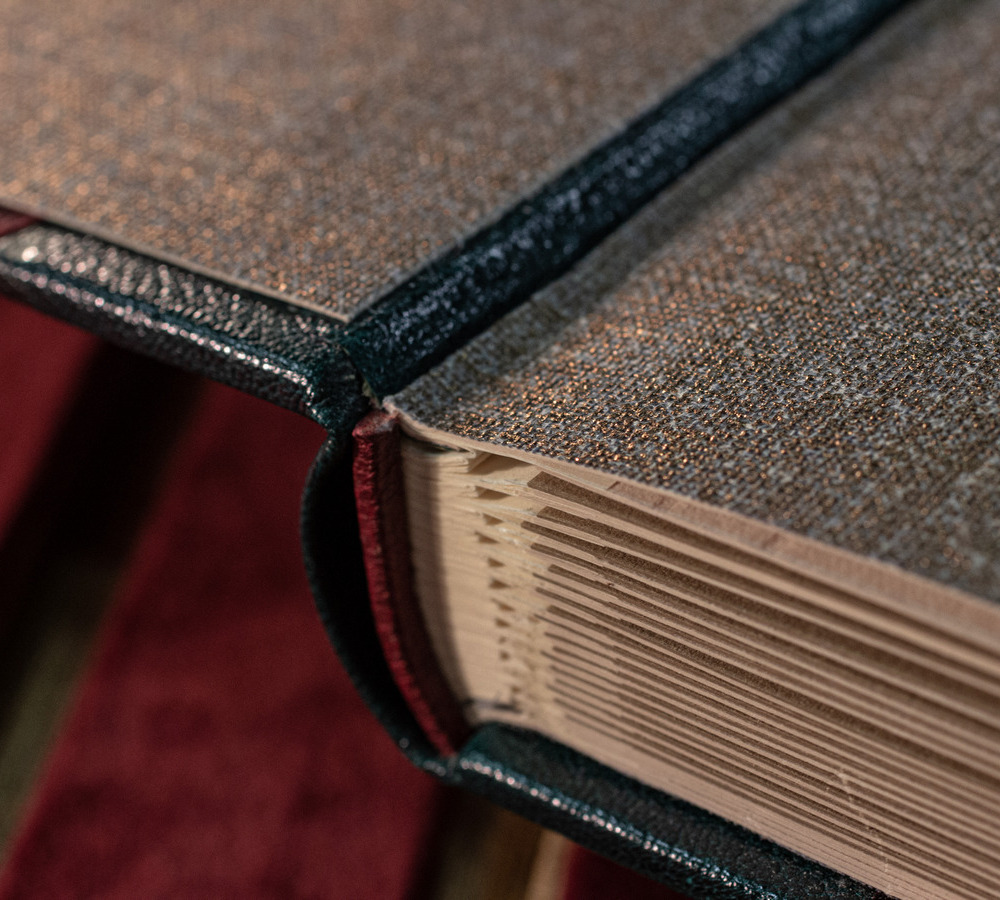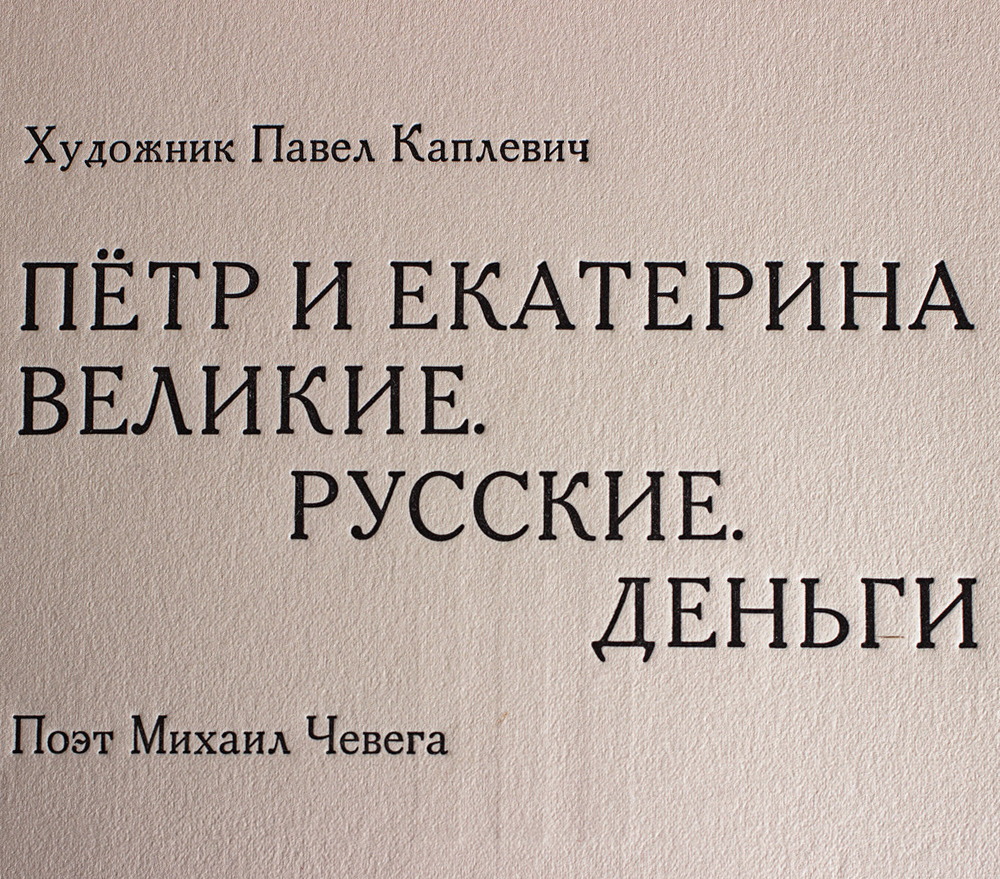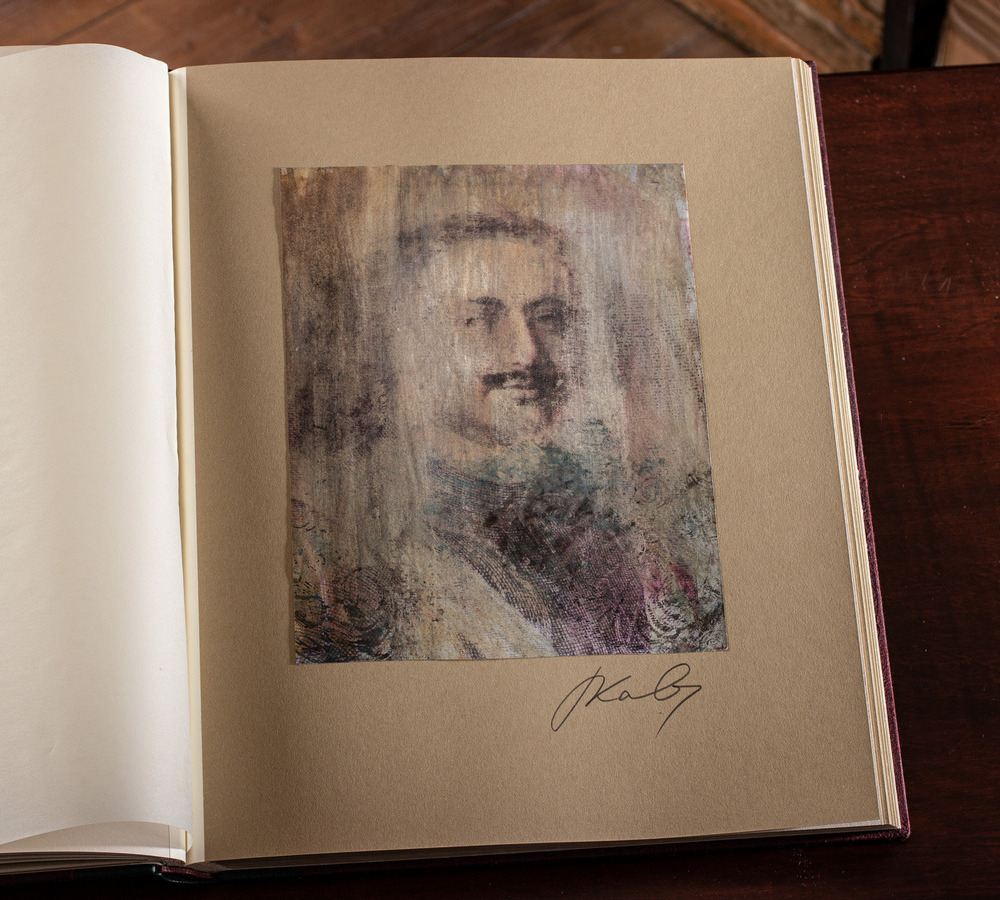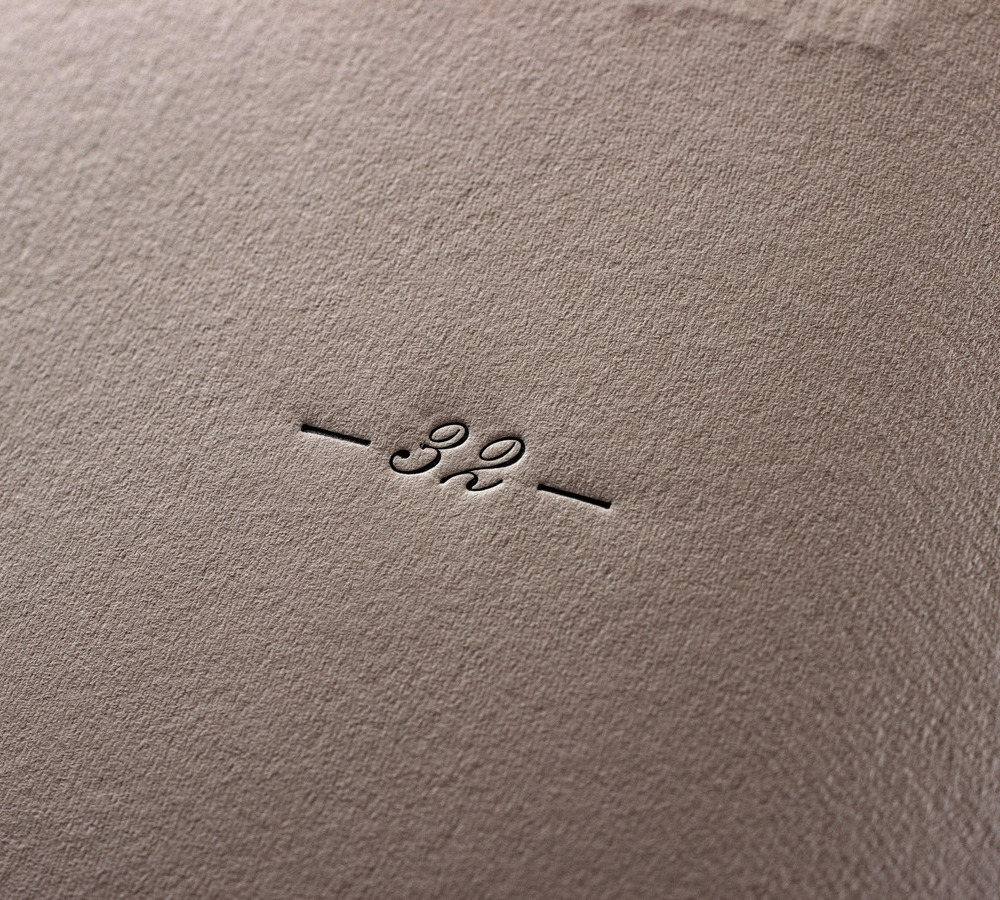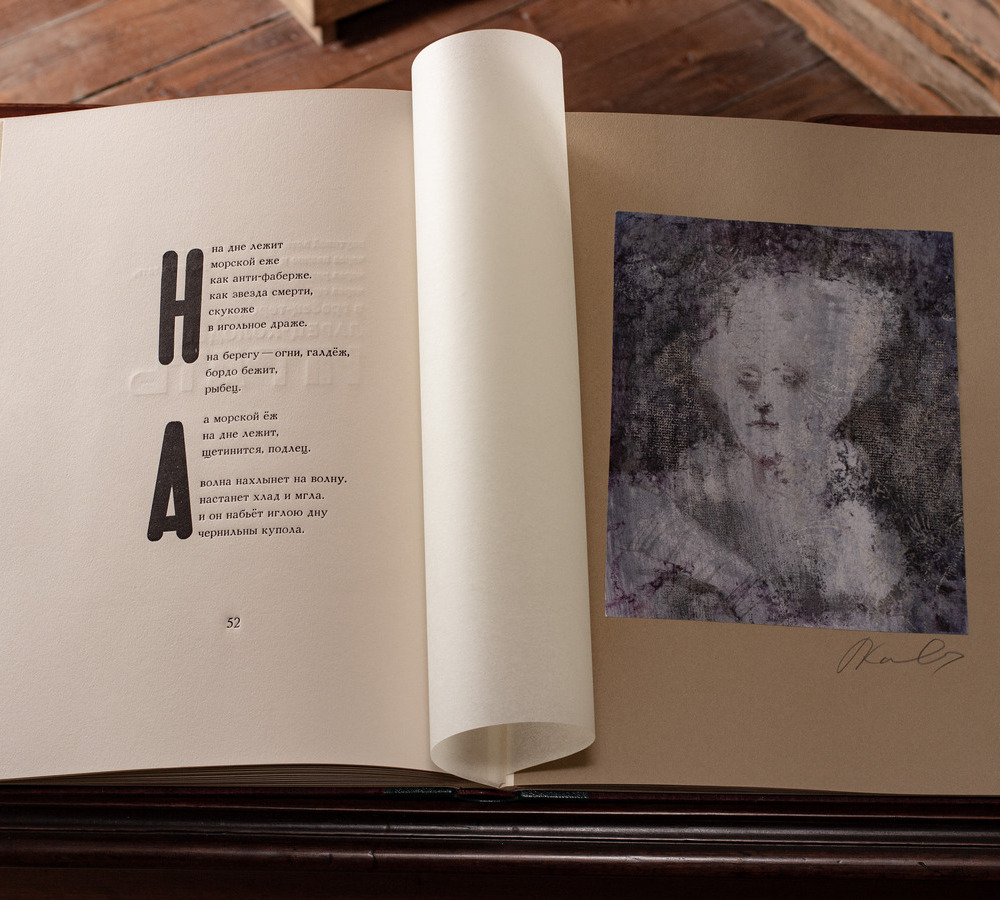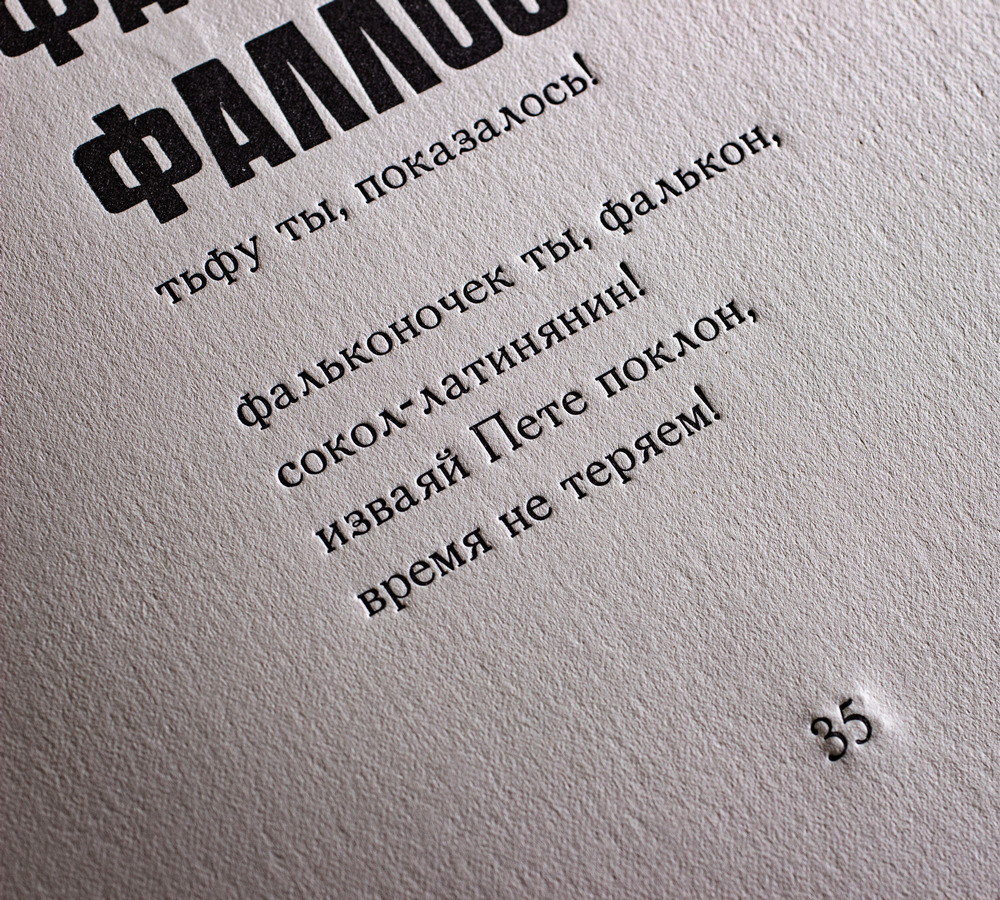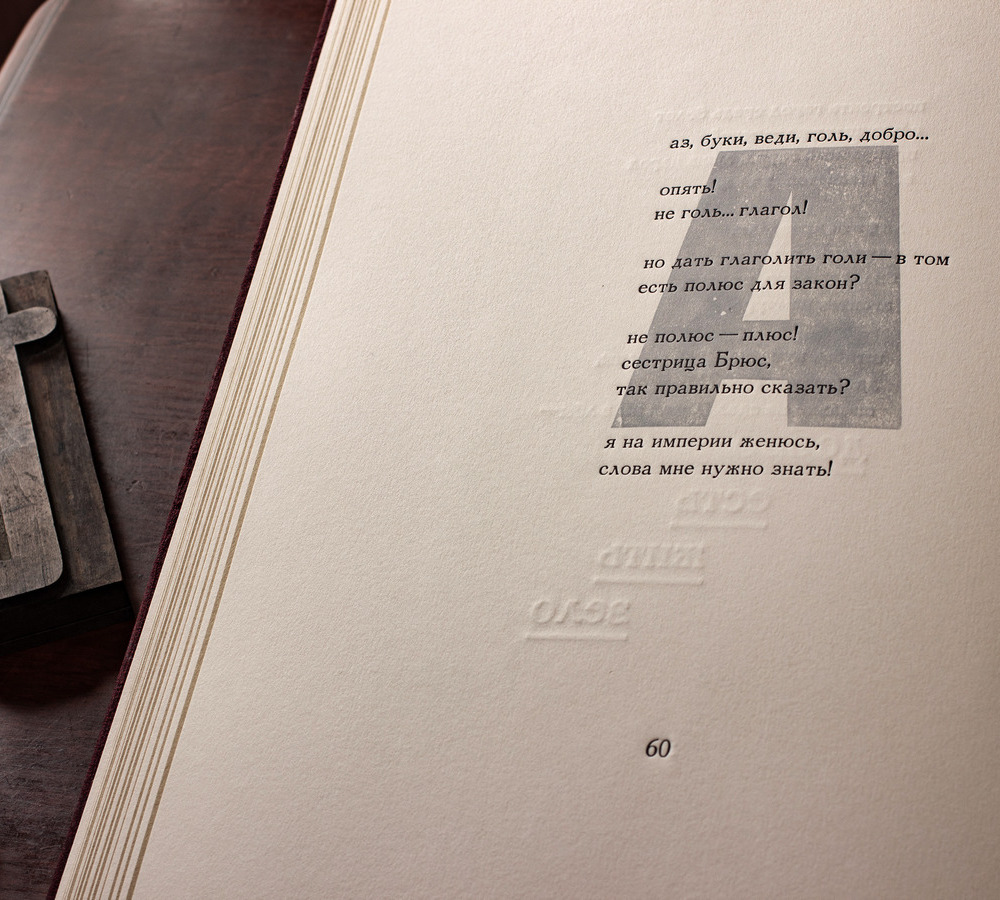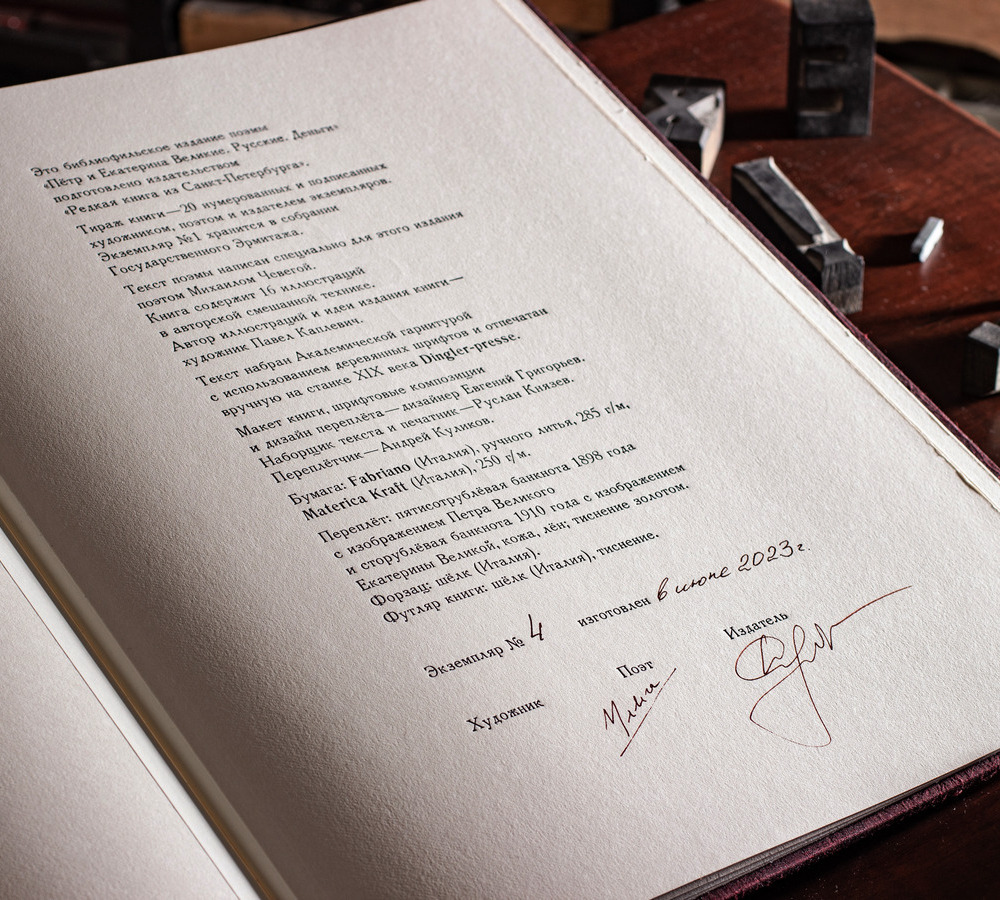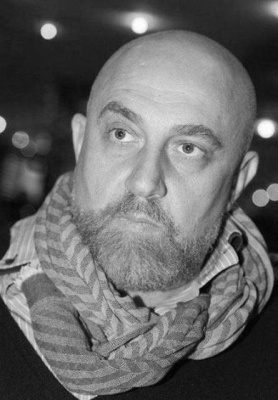PETER I. CATHERINE II. THE GREATS. RUSSIAN. MONEY
An original hand-made publication produced in a Modernist style by the creative partnership of the artist Pavel Kaplevich and the poet Mikhail Chevega. The content of the book is a surrealistic dialogue between the two “Greats” – Peter I and Catherine II – rendered visual by the artist through the prism of notaphily.
Additional information
Details of the creation of this masterpiece
-
Year of publication:2023
-
Number of pages:78
-
Dimensions:400 × 310 mm
-
Paper:Fabriano (Italy), 285 g/m², handmade; Materica Kraft (Italy), 250 g/m², handmade
Henry Ford
Why money? The two great monarchs clearly grasped the significance of money – the “sweet poison for the state”, the “artery of war” and introduced reforms that had an immense impact on the country’s entire subsequent monetary policy. It is a known fact that during each of their reigns the revenue received by the treasury increased more than six times over.
Peter I created the first monetary system in the world in which the basic unit (the rouble) was subdivided into 100 fractional ones (kopecks). Now that pattern is used for the currencies of practically all countries in the world.
The first paper money appeared in Russia at the time of Catherine II. On 29 December 1768, she issued an imperial manifesto on the introduction of paper currency that became known as assignation roubles (from the French assignat, meaning an order to pay money).
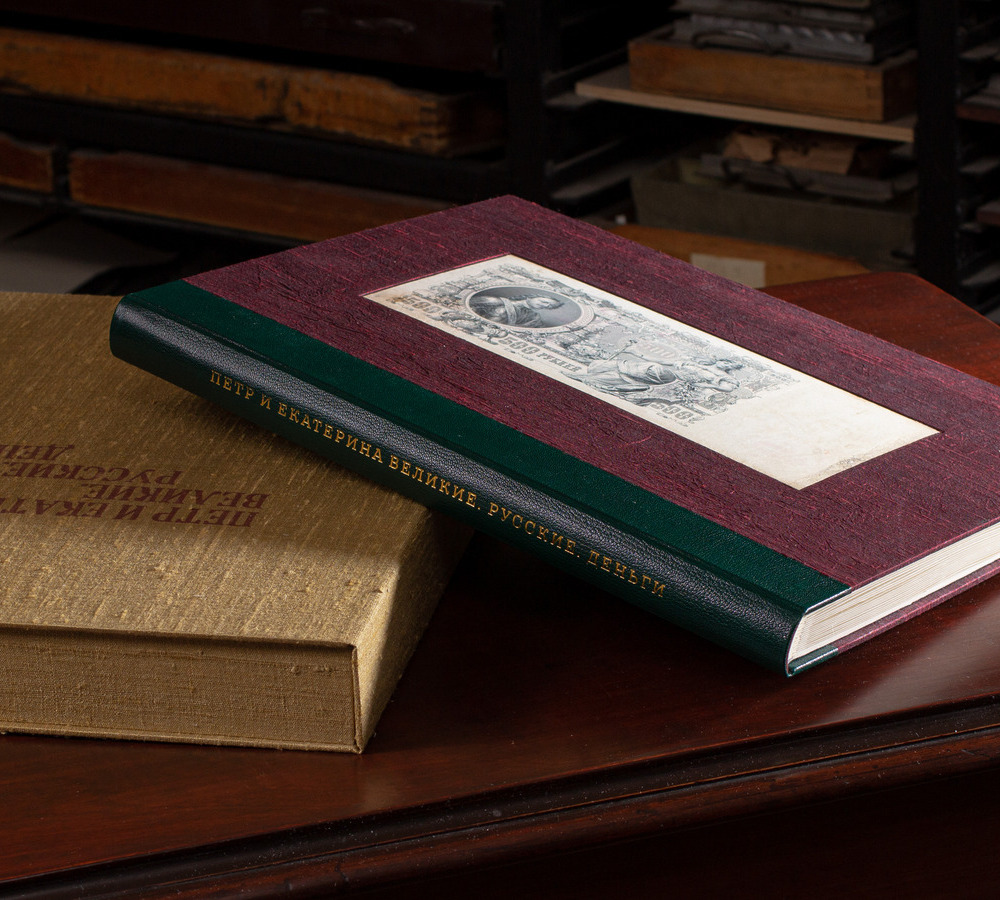
Participants in the creation of the book:
Author of the idea for the book and creator
of the illustrations — Pavel Kaplevich
Layout of the book, type compositions
and cover design — Yevgeny Grigoryev
Hand typesetting and printing of the text — Ruslan Knyazev
Binding work — Andrei Kulikov
Proof-reading — Natalia Nesterova
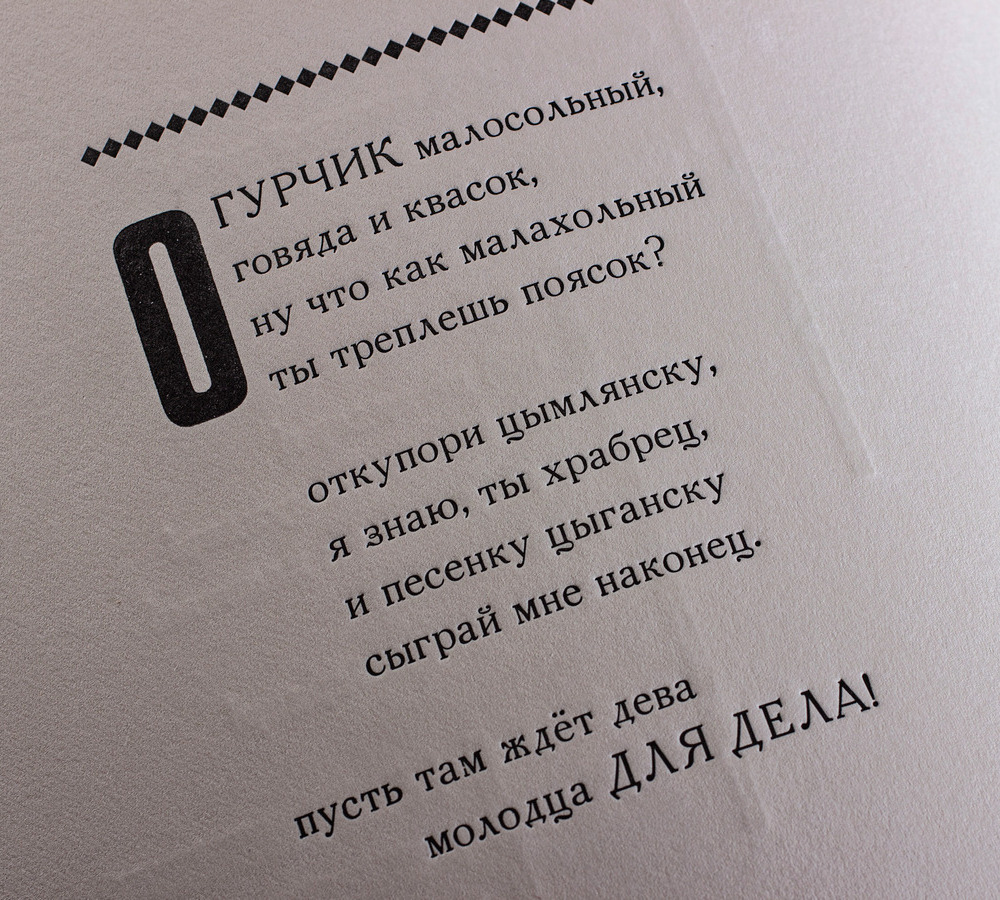
The designer Yevgeny Grigoriev constructed the outward shape of his type compositions on the basis of the rhythmic structure of the text. The words and the way they are visually embodied come together to form a single complex of form and meaning. The designer becomes a poet for the eye, combining at a figurative level the art of typography and the art of the word.
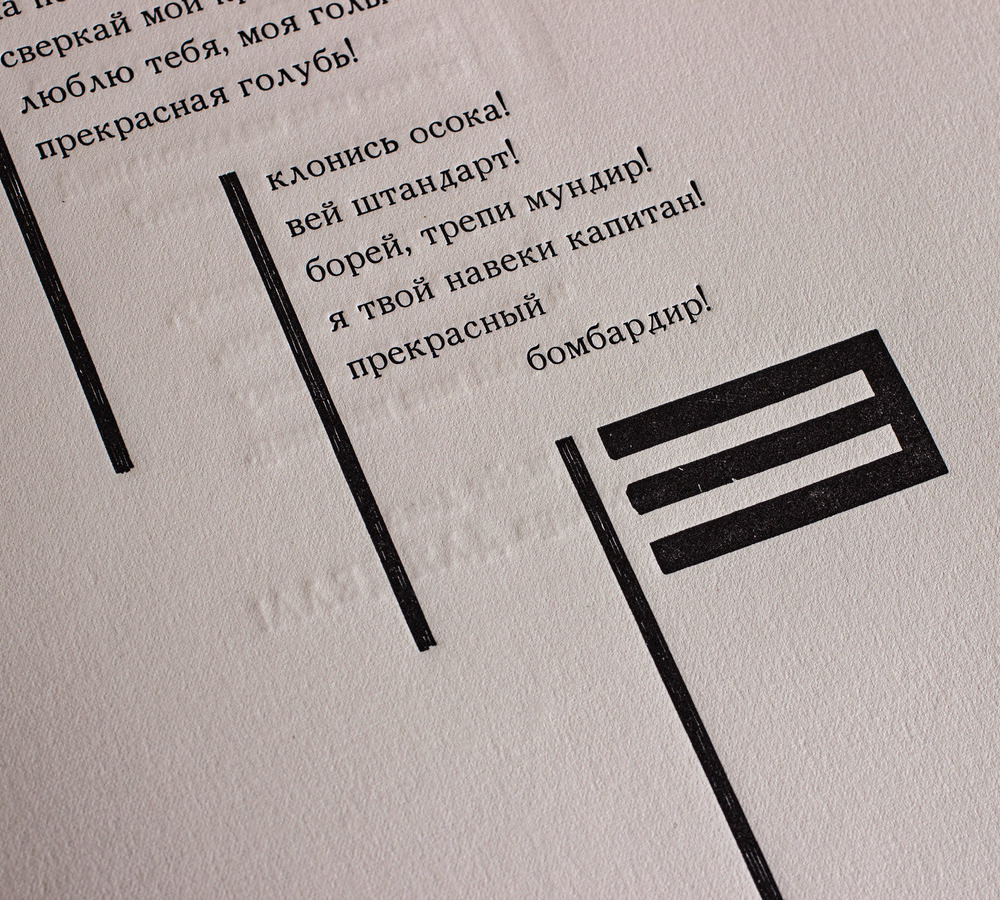
The illustrations that he produced for this book, too, are made up of countless strata. Their heterogenous realm is like the “noise” from distant historical events consolidating on the surface of a sheet of paper.
Peter, born last in line to the throne, would become the last Tsar of All Rus’ and first Emperor of All the Russias. The Tsar-Reformer, Tsar-Enlightener, a brilliant military commander and a setter of fashions, he was at the same time a stern and blood-stained ruler – the Tsar-Antichrist.
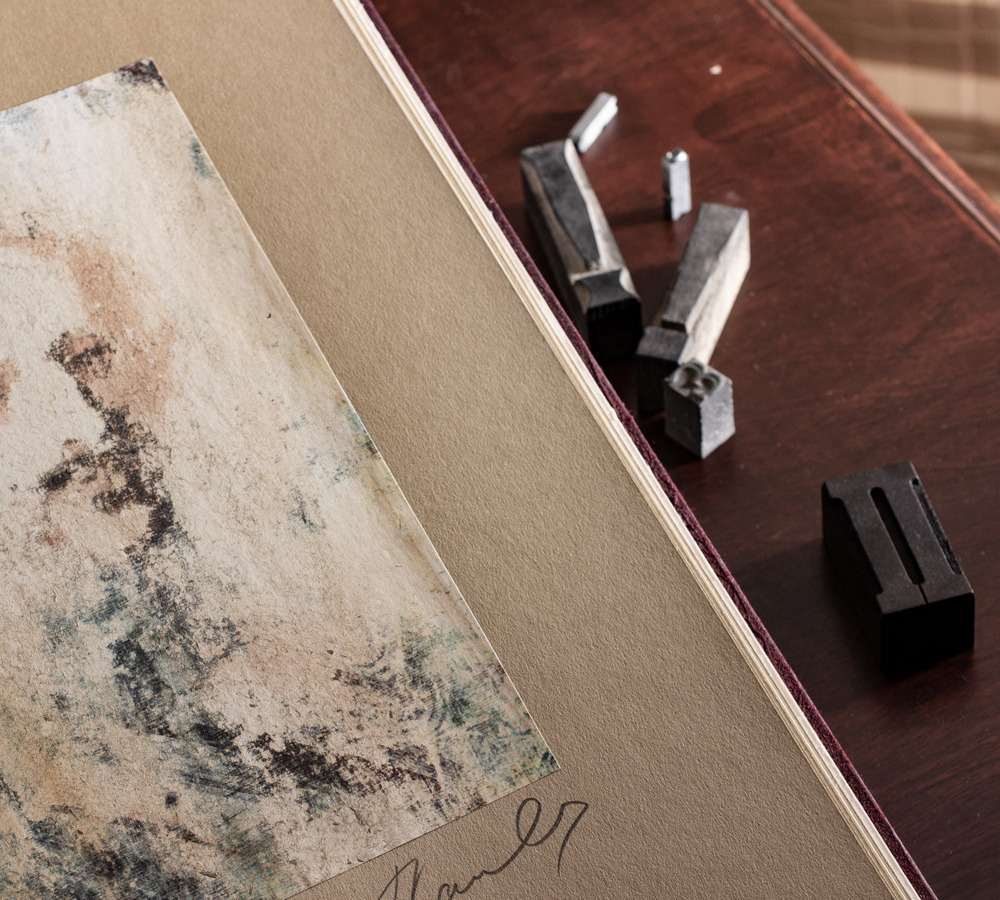
Look attentively at Pavel Kaplevich’s illustration-allusions and you will be transported back to the times described in the poem and become able to hear the ironic conversation across the ages between two great rulers of Russia – Peter and Catherine.
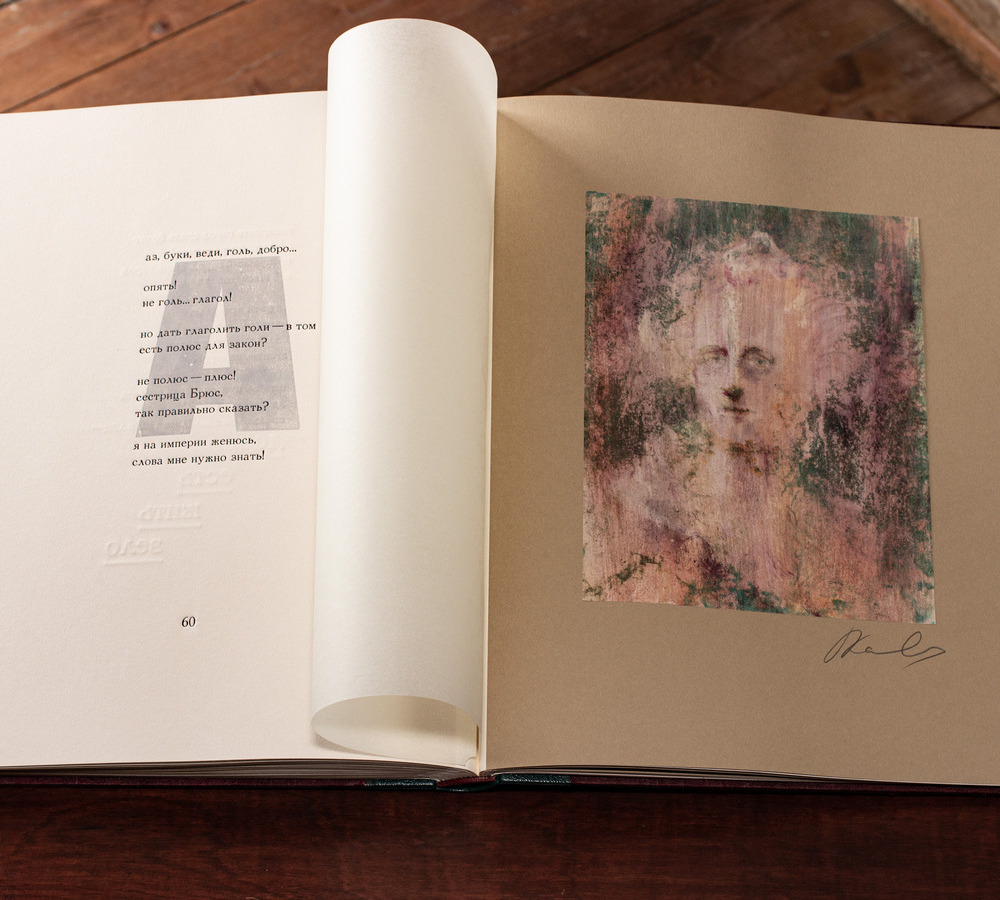
The front cover carries a 500-rouble banknote from 1912 featuring a portrait of Peter I and measuring 275 by 126 mm. People took to calling these 500-rouble notes “Peter in Armour”, 'petenki' or 'petrushi' (diminutives of the Emperor’s name).
The back cover has a 100-rouble note from 1911 with a portrait of Catherine II that measures 258 by 120 mm. This denomination was popularly known as a 'katenka' or 'katerinka', both affectionate diminutives of the Empress’s name.
These two banknotes became the showpiece of the Russian Imperial Printing Office, the body responsible for the production of state papers (direct forerunner of today’s Goznak), the highest achievement in the making of paper money in Russia.
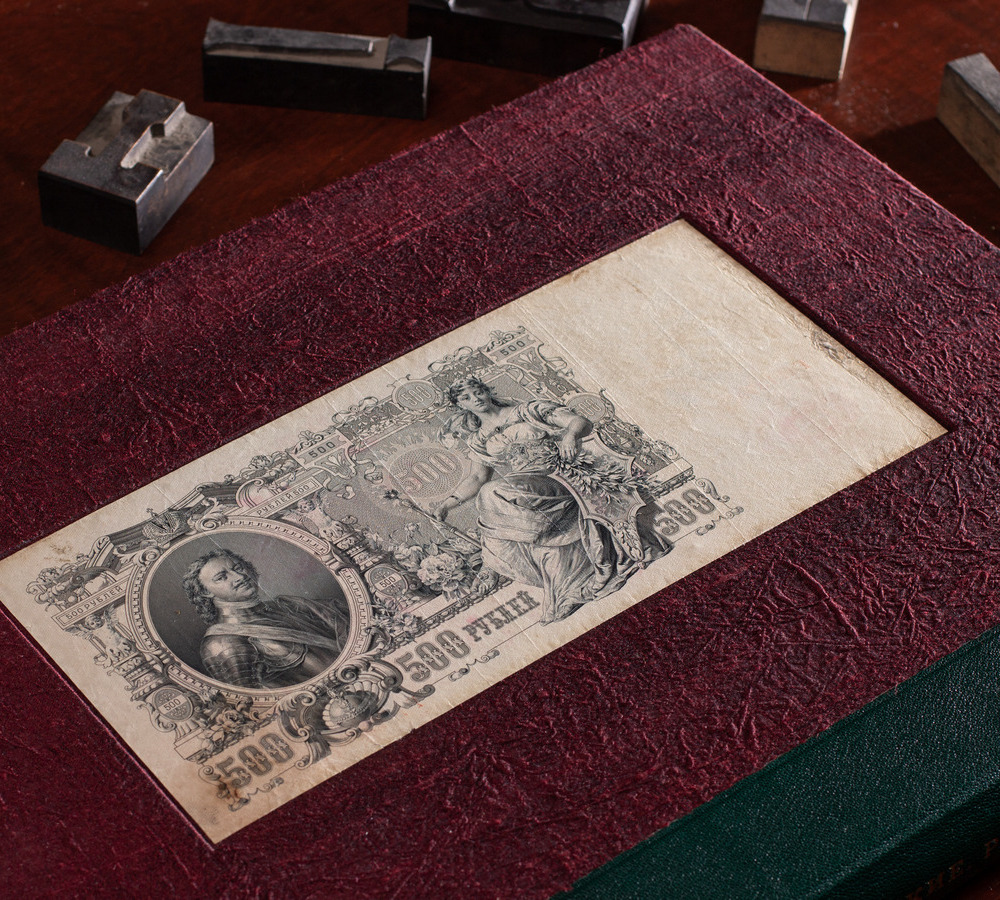
The Russian Empire’s last paper money, also known as the Romanov or Nicholas issues, were superior to banknotes from any other countries in their style, fineness of detail and number of deterrents to counterfeiting (the inclusion of a security thread and portraits as watermarks).
No other country in the world could permit itself such quality in the production of the paper and the single-pass multi-colour printing process recently invented by Ivan Orlov. Even the most skilled forger would not have been able to precisely reproduce the individual manner of the portraits’ creators.
Each copy of the book is kept in a case finished with fabric.
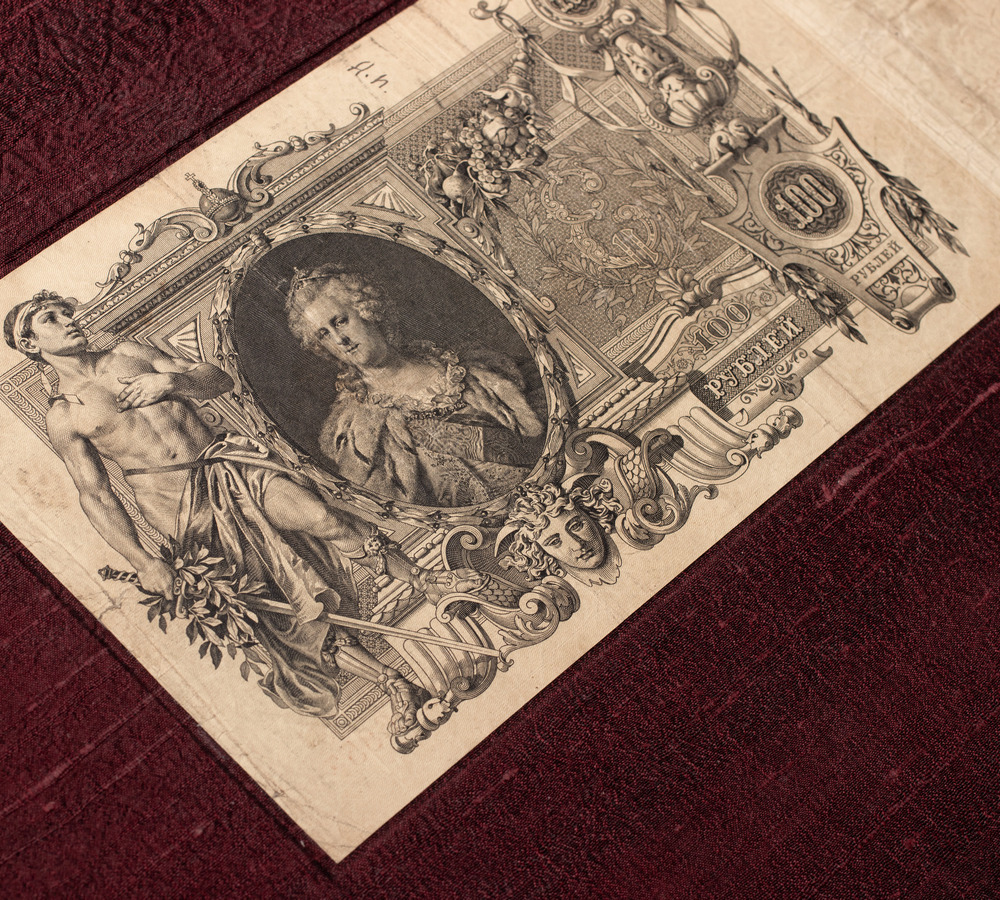
Additional information
Details of the creation of this masterpiece
-
Year of publication:2023
-
Number of pages:78
-
Dimensions:400 × 310 mm
-
Paper:Fabriano (Italy), 285 g/m², handmade; Materica Kraft (Italy), 250 g/m², handmade
Henry Ford
Why money? The two great monarchs clearly grasped the significance of money – the “sweet poison for the state”, the “artery of war” and introduced reforms that had an immense impact on the country’s entire subsequent monetary policy. It is a known fact that during each of their reigns the revenue received by the treasury increased more than six times over.
Peter I created the first monetary system in the world in which the basic unit (the rouble) was subdivided into 100 fractional ones (kopecks). Now that pattern is used for the currencies of practically all countries in the world.
The first paper money appeared in Russia at the time of Catherine II. On 29 December 1768, she issued an imperial manifesto on the introduction of paper currency that became known as assignation roubles (from the French assignat, meaning an order to pay money).

Participants in the creation of the book:
Author of the idea for the book and creator
of the illustrations — Pavel Kaplevich
Layout of the book, type compositions
and cover design — Yevgeny Grigoryev
Hand typesetting and printing of the text — Ruslan Knyazev
Binding work — Andrei Kulikov
Proof-reading — Natalia Nesterova

The designer Yevgeny Grigoriev constructed the outward shape of his type compositions on the basis of the rhythmic structure of the text. The words and the way they are visually embodied come together to form a single complex of form and meaning. The designer becomes a poet for the eye, combining at a figurative level the art of typography and the art of the word.

The illustrations that he produced for this book, too, are made up of countless strata. Their heterogenous realm is like the “noise” from distant historical events consolidating on the surface of a sheet of paper.
Peter, born last in line to the throne, would become the last Tsar of All Rus’ and first Emperor of All the Russias. The Tsar-Reformer, Tsar-Enlightener, a brilliant military commander and a setter of fashions, he was at the same time a stern and blood-stained ruler – the Tsar-Antichrist.

Look attentively at Pavel Kaplevich’s illustration-allusions and you will be transported back to the times described in the poem and become able to hear the ironic conversation across the ages between two great rulers of Russia – Peter and Catherine.

The front cover carries a 500-rouble banknote from 1912 featuring a portrait of Peter I and measuring 275 by 126 mm. People took to calling these 500-rouble notes “Peter in Armour”, 'petenki' or 'petrushi' (diminutives of the Emperor’s name).
The back cover has a 100-rouble note from 1911 with a portrait of Catherine II that measures 258 by 120 mm. This denomination was popularly known as a 'katenka' or 'katerinka', both affectionate diminutives of the Empress’s name.
These two banknotes became the showpiece of the Russian Imperial Printing Office, the body responsible for the production of state papers (direct forerunner of today’s Goznak), the highest achievement in the making of paper money in Russia.

The Russian Empire’s last paper money, also known as the Romanov or Nicholas issues, were superior to banknotes from any other countries in their style, fineness of detail and number of deterrents to counterfeiting (the inclusion of a security thread and portraits as watermarks).
No other country in the world could permit itself such quality in the production of the paper and the single-pass multi-colour printing process recently invented by Ivan Orlov. Even the most skilled forger would not have been able to precisely reproduce the individual manner of the portraits’ creators.
Each copy of the book is kept in a case finished with fabric.

Mikhail Chevega
PETER I. CATHERINE II. THE GREATS. RUSSIAN. MONEY
A surrealistic dialogue between the two “Greats” – Peter I and Catherine II – rendered visual by the artist through the prism of notaphily
Download presentation



